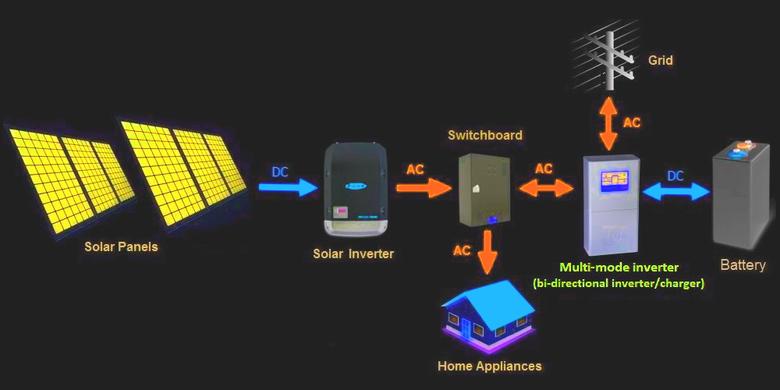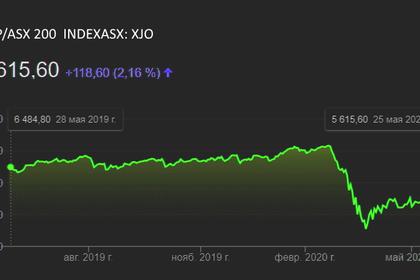
AUSTRALIA'S SOLAR AND BATTERY MICRO-GRIDS

RENEWECONOMY - 28 May 2020 - Households and businesses in remote and disaster prone areas could soon be supplied with stand-alone solar and storage systems, under new rules set by the Australian Energy Market Commission (AEMC) that allow networks to replace lengthy and costly poles and wires.
In an effort to provide greater flexibility to electricity network companies to use stand-alone power systems were they represent a cheaper alternative to the ongoing maintenance of poles and wires, the AEMC has devised new rules that it says also work to protect consumers.
In some parts of Australia, network companies have been forced to maintain long and fragile network connections to small communities. This has remained so, due to energy market regulations, even when it has been clear that replacing the poles and wires with onsite distributed solar and storage would be cheaper.
These connections can lead to disproportionately high costs to serve just a handful of customers, costs that are ultimately borne by all electricity users through higher bills. It is expected that tens of thousands of customers could be better served with solar and battery micro-grids, rather than maintaining a costly and potentially dangerous network link.
“We’re making sure the energy rules keep pace with technologies that allow better energy options, give people at the edge of the grid a more reliable service, help lower emissions and bring whole-of-system costs down,” AEMC Chair John Pierce said in a statement.
“Stand-alone power systems, which are usually a combination of solar, batteries and a back-up generator, are getting cheaper and more sophisticated. In contrast, supplying customers using poles and wires in remote areas can be very costly.”
Until now, the fact that the costs of inefficient network connections are spread across all electricity users, meant there was little direct cost incentive for the remote customers, or the networks to invest in onsite solar and storage, as they pay the same retail electricity prices despite the ‘cost to serve’ them being substantially higher.
Some energy companies have identified parts of the electricity system where potentially tens of thousands of customers could be better served through stand-alone power systems rather than remaining connected to the wider grid.
However, regulatory requirements have prevented network companies investing in electricity generation and storage systems.
This has largely been enforced through a requirement that network companies remain “ring fenced”, meaning a legal and functional separation from other electricity services like retailing and generation.
These measures have been introduced to prevent some energy companies from accruing too much market power with the energy market. However, the restrictions can also work to prevent the use of technological innovations even when it is in the best interest of consumers.
The AEMC’s new rules will allow for exceptions to the rule-fencing requirements, allowing network companies to own and operate stand-alone power systems where they are a suitable alternative to further network expenditure.
Under the new rules, network companies can apply for a ring fencing waiver to supply eligible customers with a stand-alone power system.
This will likely see distributed solar and storage systems used to supply power to remote customers, which will remain owned by the energy company, with customers continuing to purchase electricity through their electricity retailer.
The switch will likely see substantial cost reductions in supplying remote customers, as it avoids the need for network companies to maintain costly and inefficient network connections to just a handful of households and businesses.
“Network costs can increase further when there are issues with poor access and managing vegetation, or the need to use more expensive equipment (such as insulated overhead conductors or underground cable) to manage things like bushfire risk,” Pierce added.
“Stand-alone systems give electricity networks more options – and that’s good for customers.”
The AEMC has also published a set of recommended regulations for non-network companies installing stand-alone systems and hopes the rule change will establish a uniform approach to stand-alone systems.
“Until now, there has been no national approach to stand-alone power systems, which have largely come under different state and territory legislation,” Pierce added.
There had been concerns about consumer protections and the ability to maintain reliable supplies to remote customers if they were disconnected from the grid.
However, the AEMC says that the new rules include measures to ensure adequate customer protections remain in place and that customers continue to receive reliable electricity supplies.
Customers supplied with stand-alone power systems will still be able to access competitive retailer offers and will continue to be covered by consumer protection measures, including hardship and ombudsman dispute resolution processes.
The new rules have been widely supported, as expressed in submissions to the AEMC across a range energy market participants. However, some network companies suggested that the regulatory requirements remained too onerous to allow the widescale use of distributed energy systems and called for a further relaxation of the regulations.
The new rules will now need to be adopted within the relevant legislation in each of the States and Territories to enable the new approach.
-----
Earlier:









